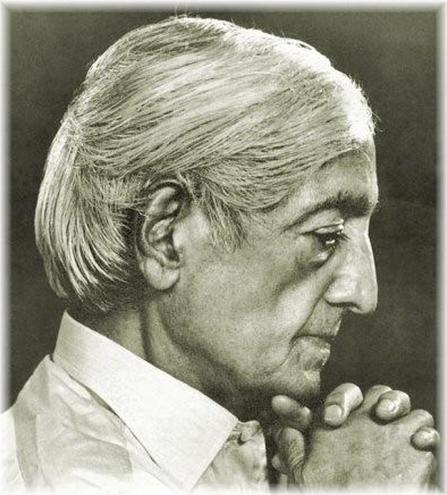How to Operate a Barbell
The optimal transformation tool is misused and misunderstood by the uninformed

The lowly, barbaric barbell is the most neglected, misused, and abused tool in nearly every fitness facility. But used properly, it is also the most effective transformational tool available. No other device comes close to delivering the same transformative results as correct barbell technique combined with old school hardcore progressive resistance training strategies.
The purpose of resistance training is to acquire indisputable physiological results. These results are specifically defined as new muscle mass and significant increases in strength levels and power capacities.
A barbell can and will transform a human body dramatically, radically, and quickly if the right exercises are performed using the proper techniques and protocols.
The four biggest mistakes amateurs make when attempting to operate a barbell:
- Picking the wrong exercises. There is an exercise hierarchy in hardcore resistance training. Generally speaking, all resistance exercises break down into two generalized categories: compound and isolation. An isolation exercise targets a specific muscle while excluding neighboring muscles. A compound exercise requires groups of muscles to work together in a synchronized fashion. Compound exercises trump isolation exercises and should be given the lion’s share of your available training time. Resistance machines are usually designed for isolation exercises, which is another reason to avoid working with machines.
- Shortening the rep stroke on purpose. If a man can move 100 pounds in a given exercise using a full and complete rep stroke, he can move 200 pounds if he cuts the rep stroke in half, and 300 pounds if he only uses a third of the potential stroke length. Men love to shorten the rep stroke in difficult exercises so they can move more weight than they’re actually capable of lifting. But partial reps deliver partial results. The iron elite champion full range of motion exercises and so should you.
- Lack of sheer physical effort. In fitness, “intensity” refers to the level of exertion during resistance training. The average trainee usually doesn’t train hard enough to trigger hypertrophy and other adaptive responses. The elite know that sheer physical effort is the key to strength training success. We need to consistently equal or exceed our current limits and capacities in some way during every workout.
- Believing machines and free-weights give equal results. Wrong! Resistance training exercise machines are inferior to free-weights when it comes to results. Machines are alluring because they are comfortable and easy to use. But, a chest press on a machine is not as effective at building muscle and strength as a free-weight barbell or dumbbell flat bench. The machine eliminates the 3rd dimension of tension, which activates stabilizing muscles as the trainee fights to control side-to-side movement.
By recognizing and correcting these fatal flaws we can stop wasting time with sub-maximal effort on exercise machines. Make the most productive use of your training time with these four productive changes:
- Reduce the number of exercises you perform. Concentrate your resistance training efforts on mastering the “four core” exercises—the squat, bench press, deadlift, and overhead press. Dedicate the majority of your training to these lifts, and practice them almost exclusively. Perform fewer exercises, but do them with far greater precision, focus and effort.
- Refine exercise techniques. Each of the “core four” exercises has a specific technique. Seek technical mastery in each lift—each lift has subtle variations used for different physiological effects. Technique should be honed and refined over time. We worship at the altar of technique and perform perfect lifts with incredible effort.
- Have a plan. Elite iron men always have a resistance training goal and they use the strategy of periodization to build strength incrementally. Progress continues each successive week for 8-16 weeks. Reps, sets and poundage are tweaked to ensure progress.
- Embrace struggle. The hardest lesson for the novice is to accept that effective resistance training must include real struggle and effort. Struggle and effort trigger the adaptive response which brings all the positive benefits of effective resistance training. Any resistance program that avoids intense effort is a waste of time at best—at worst, it’s pure fraud.
Optimal barbell use involves learning how to properly perform the “core four” exercises with the preferred motor-pathways and full range-of-motion techniques. We must also concentrate on a limited number of compound multi-joint exercises. With a limited menu of exercises, the trainee gets very good at those few select exercises quickly. The hardcore strength athlete’s philosophy involves “doing fewer things better.”
Elite athletes and Tier I spec ops types understand and embrace our purposefully primitive, streamlined strength-training approach. They understand the system’s profound simplicity and obtain dramatic results from diligent practice. The elite athlete who uses our system with precision, respect, and reverence will obtain outstanding results every single time.
Meanwhile, the general public doesn’t understand or want our ancient approach with the barbell and its “mini-me” cousins, dumbbells. Our system delivers what all fitness adherents seek—tangible physical results on a consistent and ongoing basis. Yet, the general public will not give our simple muscle and strength strategy even a casual test drive.
John Q. and Mary J. Public prefer to be seduced by fitness pied pipers who say that a magical elixir, system, tool or fitness product will enable them—for a price—to bypass the effort, sweat and discomfort associated with a profound physical transformation. Here is a “chocolate flavored factoid” (as Norman Mailer once called bon mots) for you to ponder—why would the human body radically adapt to modest exertion? Why would the body undergo a profound adaptation in response to anything less than a profound degree of sustained physical effort?
Modern man is cursed with too many choices. He desperately wants to believe that an easy, effective alternative exists instead of facing the gruesome reality of a purposefully primitive free-weight regimen rooted in disciplined adherence and egoless effort. Perhaps the delusional seeker simply thinks it’s impossible to find the golden needle of progress hidden so deeply in the fitness haystack.
People want fitness equipment manufacturers to make resistance training easier and more user-friendly. People want to emasculate resistance training even though doing so will negate any possible physiological benefits. Watered down resistance training might be fun, but it is so ineffective that playing golf or going bowling would be a better use of your time. An exercise session performed at 60% of max exertion using a dozen different exercises on smooth-as-glass machines, is neutered, emasculated resistance training. But, this sub-maximal strategy is widely practiced and taught at modern commercial fitness facilities.
Less is known about using a barbell correctly as compared to any other fitness tool in a commercial gym. Gym staff “experts” may claim to know about effective barbell training, but 99.9% of the time they don’t know jack squat. In today’s fitness landscape, the training possibilities and potential protocols to choose from are vast and daunting unless you are lucky enough to be instructed by a rare iron expert. A normal person knows as much about using a barbell properly as much as they know how to fly an F-15 fighter jet.
The Bottom Line: If you want to reap the rewards from an effective resistance program, base your thinking on the strategies we’ve discussed. Understand the exercise hierarchy and realize that all resistance exercises are not created equal. Resistance training is ineffective without effort and struggle. For results, we need a periodized game plan, the right exercises (performed correctly), and enough effort required to trigger hypertrophy. Exert profound physical effort and reap dramatic physical results.
***
Marty Gallagher, author of The Purposeful Primitive, is an underground legend. Mentored by a Hall-of-Fame strength athlete as a teenager, Marty set his first national record in 1967 as a 17-year old Olympic weightlifter; he set his most recent national record in 2013 as a 63-year old powerlifter. He is a former world powerlifting champion who turned his attention to coaching athletes and devising individualized training templates for the finest strength athletes in the world. Read more about Marty here.

